It is difficult today to imagine how shocking something as seemingly simple as the application of paint to canvas once was. Of course, there was much more to the advent of Impressionism than that, but as we mark the 150th anniversary of the first impressionist exhibition in 1874, it is helpful to remember that there was not just shock, but a certain degree of derision to its reception. This was because European art, like society at the time, was held in check by convention. Men wore a certain kind of suit, women wore corsets and did not go out alone. Painting was learned from masters and from copying masterpieces, and despite the overturnings and murders of the French Revolution, strict rules applied in all things.
The annual Paris Salon conferred success on the artists, who were selected by a jury from the Académie de Beaux-Arts: think of it like a much more staid RHA Annual. But by the 1860s there were rumblings and mutterings. The jury had got stricter, and fewer works were chosen. Napoleon III intervened, and a second Salon, the Salon de Refusés, was set up to exhibit some rejected work. Édouard Manet showed his now-famous Le Déjeuner sur l’Herbe, which depicts a naked model picnicking with two fully clothed male artists while a second woman wearing a slip cools off in a pond beyond.
The model, Victorine Meurent, who was also the subject of a second controversial Manet painting, Olympia, was an artist herself. In that year she had had her work accepted into the Salon. For years in art history class, I had been taught that part of the Manet controversy stemmed from the “fact” she was a prostitute. Art history has done some very strange things to women: where it couldn’t write them out, it often marginalised, derided or, in Meurent’s case, outright lied. But as a new exhibition at the National Gallery shows, there is far more to the story of women in Impressionism than muses, models or mothers.
After the Salon des Refusés, Manet acquired a degree of frisky cachet, and the group that met regularly at the Café Guerbois included Claude Monet, Pierre Auguste Renoir, Edgar Degas, Camille Pissarro and Paul Cézanne, together with a wider circle of young artists on the hunt for something different. Émile Zola rocked up from time to time. Inevitably ideas for an alternative exhibition were proposed. Monet was for it, Degas said they should be wide and generous with their invitations to artists, Cézanne reckoned they should keep submitting deliberately offensive paintings to the Salon, and Manet that the Salon itself was still the best and only option ... On April 15th, 1874, the first exhibition of the snappily titled Société Anonyme des Artistes, Peintres, Sculpteurs, Graveurs, Etc was held. And of the 30 artists, two were women.
READ MORE
Of the Comtesse de Luchaire next to nothing is known, but the legacy of Berthe Morisot is central to the National Gallery’s show, and to the world of the group who would become known as the impressionists. A regular exhibitor at the Salons, Morisot showed in all but one of the eight impressionist exhibitions. As the daughter of a well-to-do French family, Morisot and her sisters Yves and Edma were given an art education, which included copying works in the Louvre, and it was there that she met Monet and Manet, who would go on to become a friend and mentor.
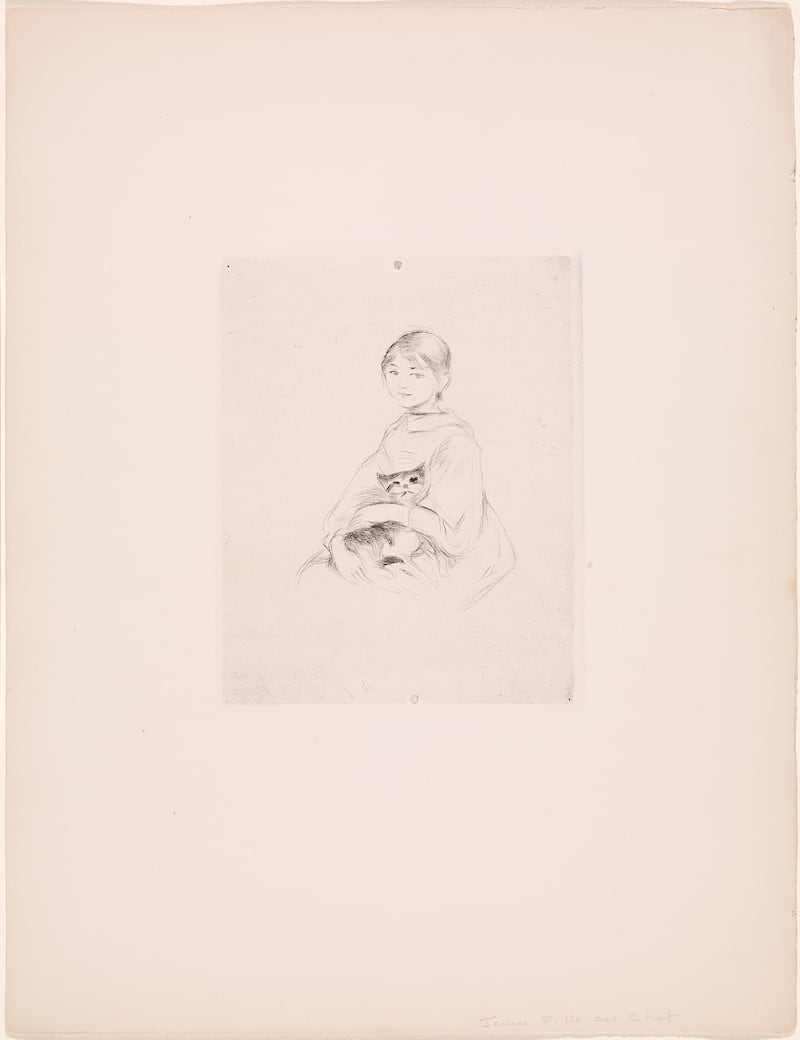
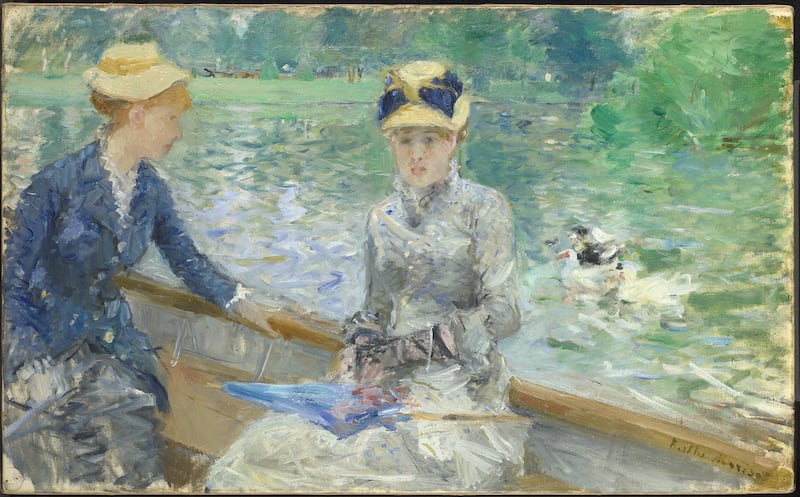
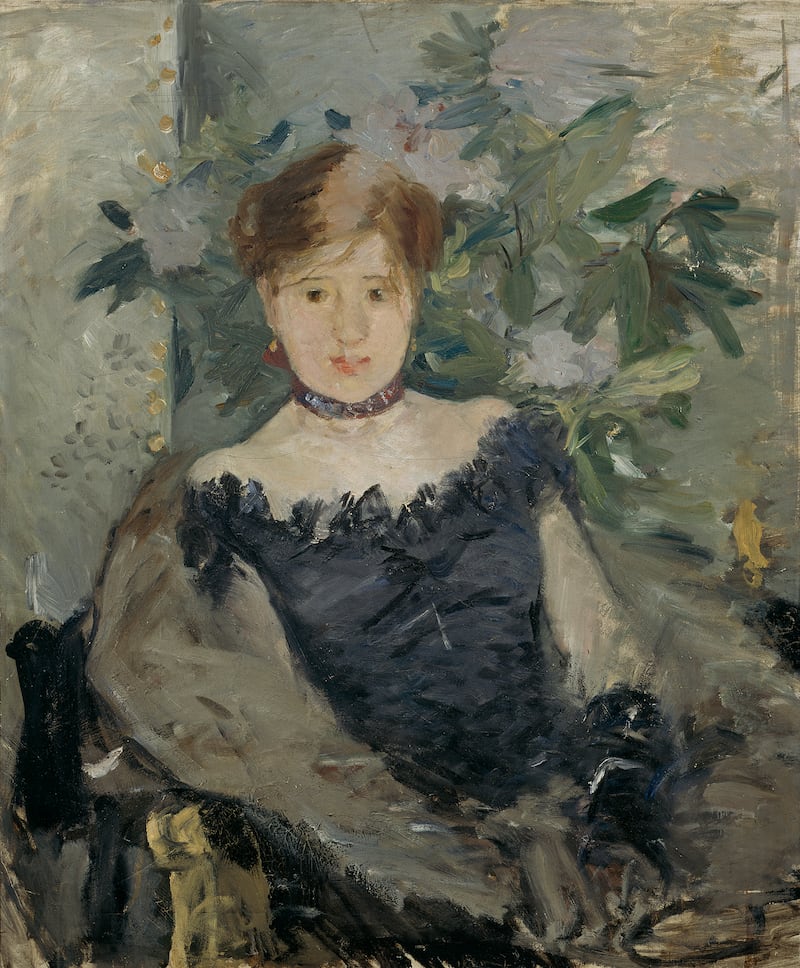
One of the few paintings by men in the National Gallery’s Women Impressionists exhibition is a portrait of Morisot by Manet. Painted in 1872, two years before she married Manet’s younger brother Eugène, it is an enigmatic work in which she wears dark clothes, painted in jagged strokes. Her veil is the strangest part of all, its black lace band appears like a gag or scold’s bridle across her mouth. Unanchored by context, it could seem as if Manet is trying to silence a rival in paint, and yet it is more likely to be the opposite.
The group had become known as the impressionists following Louis Leroy’s satirical review of that first exhibition, which drew on the title of Monet’s painting: Impression, Sunrise. Leroy described the works as mere impressions. As with so many jibes, there was an element of truth to the skewer, but how was Leroy to know that the ability to give an impression of something – be it a sunrise, a steam train, the glow of light on water, the lace around the face of a woman, the soft limbs of a sleeping baby, or a glorious profusion of water lilies – allows space for our imaginations to participate in the meaning, and in the wonder of the work?
Sitting for Manet as an artistic partner, Morisot would have collaborated in the making of her image, and the impression created by this extraordinary work is of a sense of danger and distortion, a power waiting there behind the silencing veil. Perhaps the work was to become more prescient than intended. Morisot featured centrally in Théodore Duret’s influential 1878 book on impressionist painters, but by 1906, he had relegated her to a supporting role, considering her work “women’s painting”.
But what is “women’s painting”? Concentrating on four pivotal women in the story of Impressionism – Morisot, Mary Cassatt, Eva Gonzalès and Marie Bracquemond – the exhibition makes two parallel cases. In the former, women’s painting is no different from men’s. The brushstrokes are extraordinary; the capturing of light, the fascinating pull to abstraction, and the defiant demonstration of the realities of life are all there, whatever the gender of the person who is holding the brush. However, there are differences too.
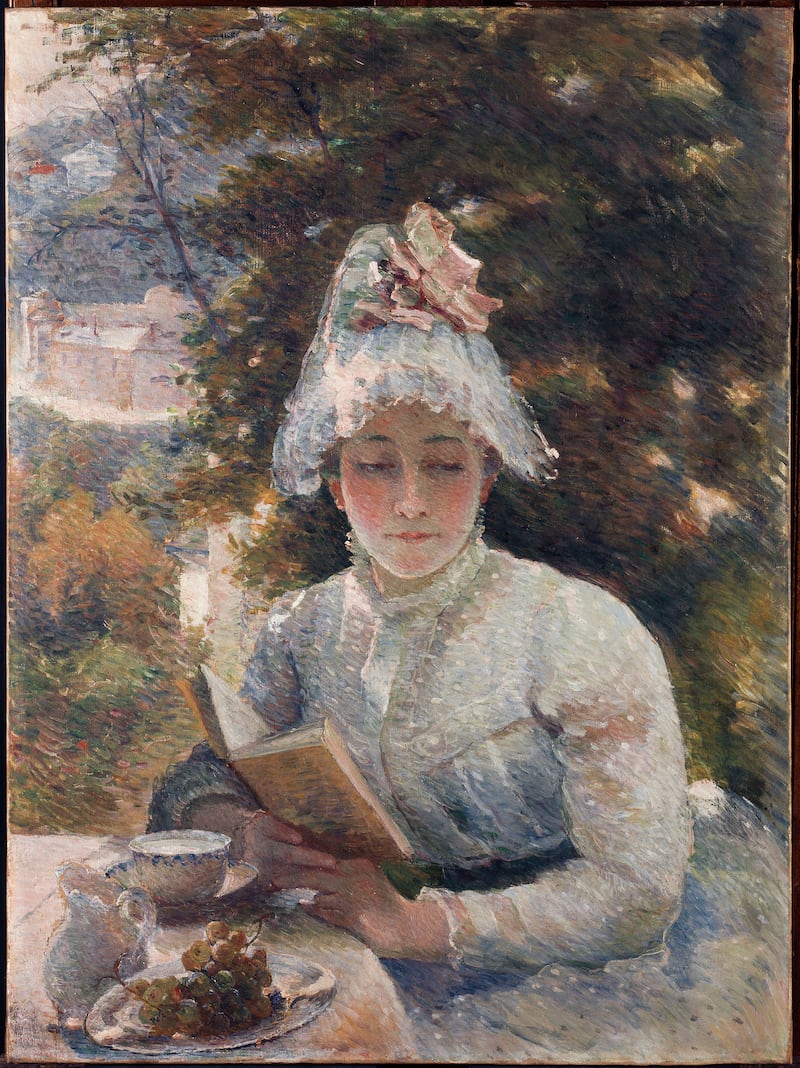
The National Gallery’s exhibition owes its origins to a larger show, Impressionism and its Overlooked Women, organised by the Ordrupgaard Museum in Denmark, with which the National Gallery collaborated. In that show, a thrilling Degas painting, of trapeze artist Anna Olga Albertina Brown in full flight, shows by proxy how limited women artists were in terms of subject matter. Unlike her male contemporaries, Morisot would have required a chaperone to paint in public, and paintings of gritty street, dance hall, circus life or even painting from life (unless it was of family) would have been beyond the pale.
Misogyny mainly manifests itself in how those different subjects were valued, as well as how the work was described. Why are works depicting engineering, war or prostitution more valued than those of motherhood, surely a bloody, vigorous and fecund process in itself? Certainly, the great men of the Renaissance were not considered lesser for all their Madonnas with Child. Perhaps we have inherited a distaste for the subject from subsequent exposure to the more saccharine and sentimental Victorian depictions.
There are other differences too. Morisot’s 1874 Woman with a Fan is a study of her close friend Marie Hubbard that has more intimacy and truth to it than so many of the other reclining women that litter the halls of the world’s art museums. This is looking and seeing, rather than seeing and owning. But are those brushstrokes muscular and determined, or delicate and tentative? The gendered description doesn’t matter when art is this good.
In the second exhibition space, the gallery suddenly explodes into light. Here, landscapes by Morisot and Mary Cassatt are aglow, and it is phenomenal to experience what paint on canvas can do to the heart, mind and – yes – soul. Throughout the exhibition, we get a wonderful sense of the world of these artists. A wall panel shows Morisot’s Le Corsage Noir, 1878, purchased by the National Gallery in 1936, appearing on the wall in a photograph of Julie Manet, the artist’s daughter. It is there again, painted as a backdrop to another Morisot work: these were lives lived in, and with art, and with friends who just happened to turn the art world on its head. Elsewhere, Morisot’s 1890 Peasant Girl among Tulips has the whiff of an overdone Renoir about it, and it is no surprise to discover that she and Renoir often painted together, and shared the same models. Who is to say who influenced whom? Morisot moved on beyond the chocolate box, while Renoir didn’t always make it.
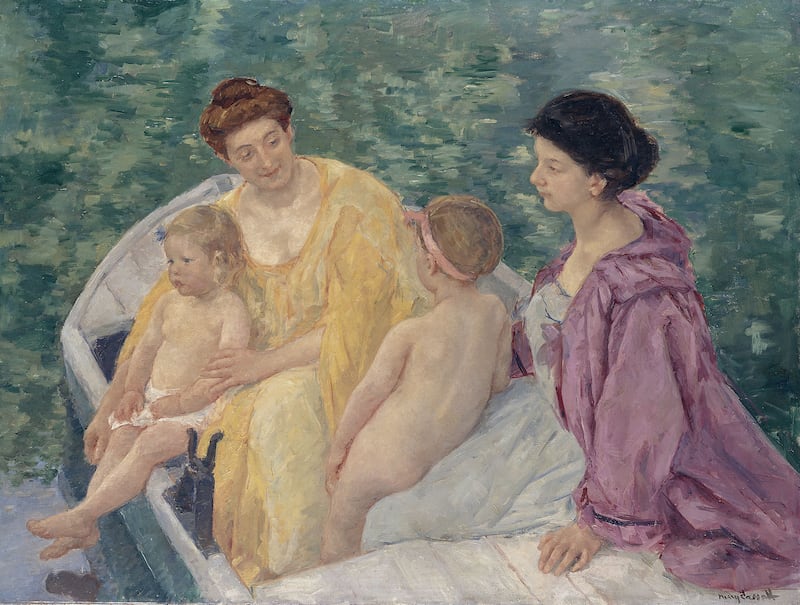
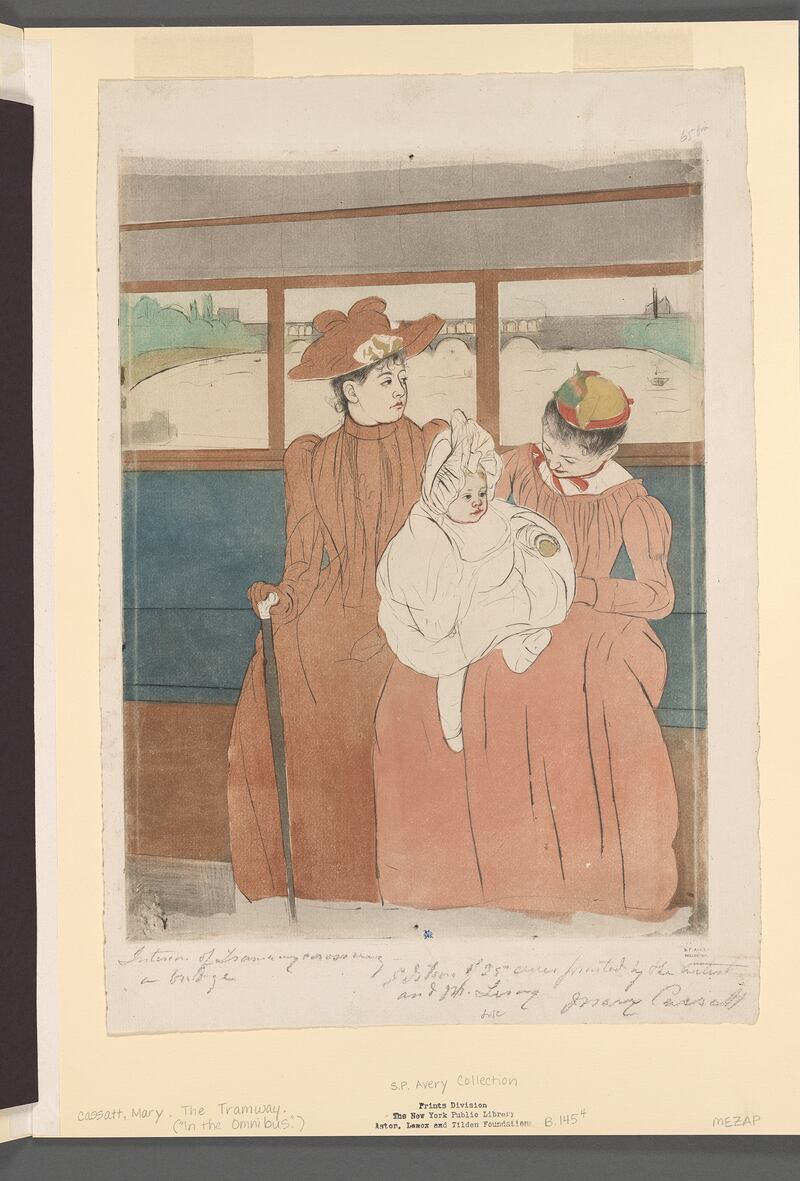
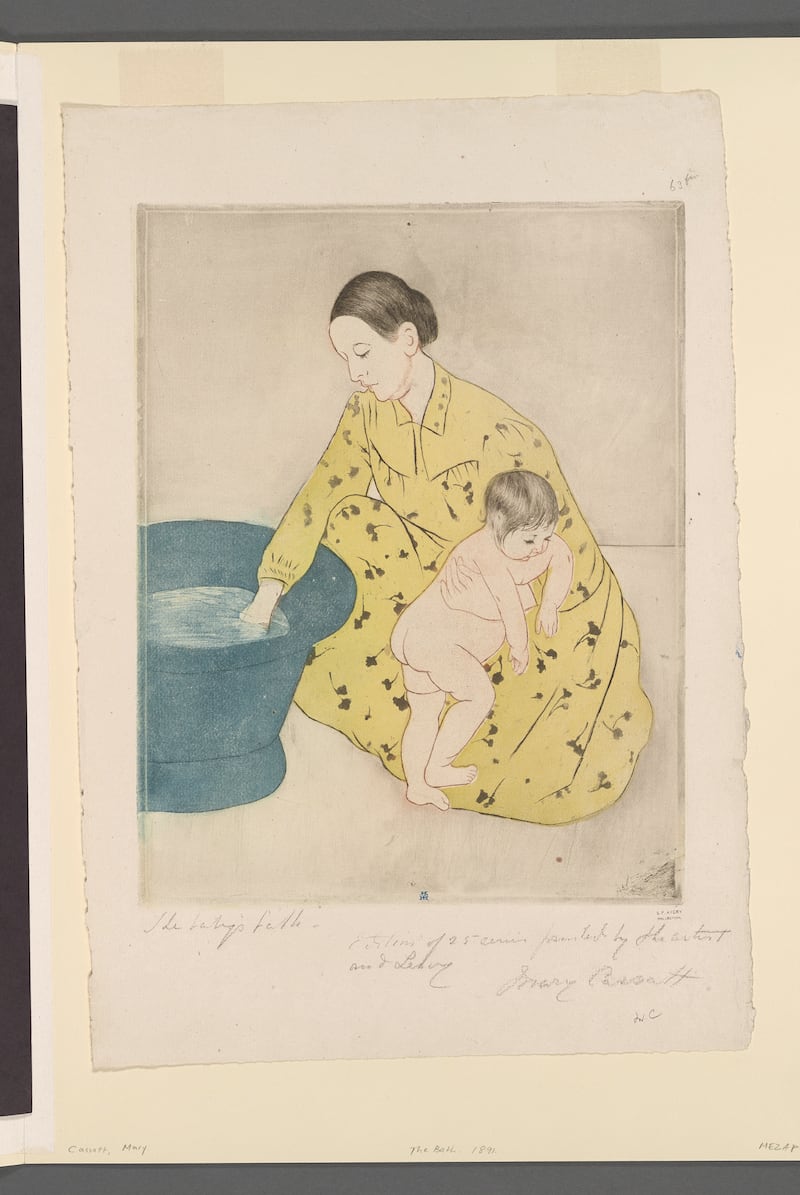
Influence is a fascinating thing. A collection of prints by Mary Cassatt has a strong Japanese flavour. In 1856 Félix Braquemond came across a book of Japanese master Hokusai’s prints, and after Japan began to open up, Japanese exhibitions became hugely popular in Paris, with exhibitions including one put on by Vincent Van Gogh of Japanese prints abounding. An American in Paris, Mary Cassatt was a powerhouse, proudly independent and financially acute. Her work is extraordinary, not least for the way she can let the abstract qualities of her paint push at the edges, almost as if she is anticipating the changes another half century will bring. In The Visitor, 1880, the top left of the canvas is dominated by a glowing rectangle, haunted by yellow, that a later artist such as Cy Twombly would have been proud to dream of.
Marie Braquemond is a sadder story. A talented painter, married to a talented painter; her husband Félix had the studio, while she worked from her bedroom. Was it his jealousy that isolated her and eventually led her to abandon art altogether? Or a more subtle blend of personal and domestic tensions? Born in 1840 or 1841, she had been a regular exhibitor with the impressionists, her large-scale works having a vibe of Pierre Bonnard, unless it was Bonnard that had a vibe of her. As her style grew braver and ever more evolving, her husband’s opposition grew stronger, and for the final 30 years she lived as a recluse, never working or exhibiting again. She died in 1916.
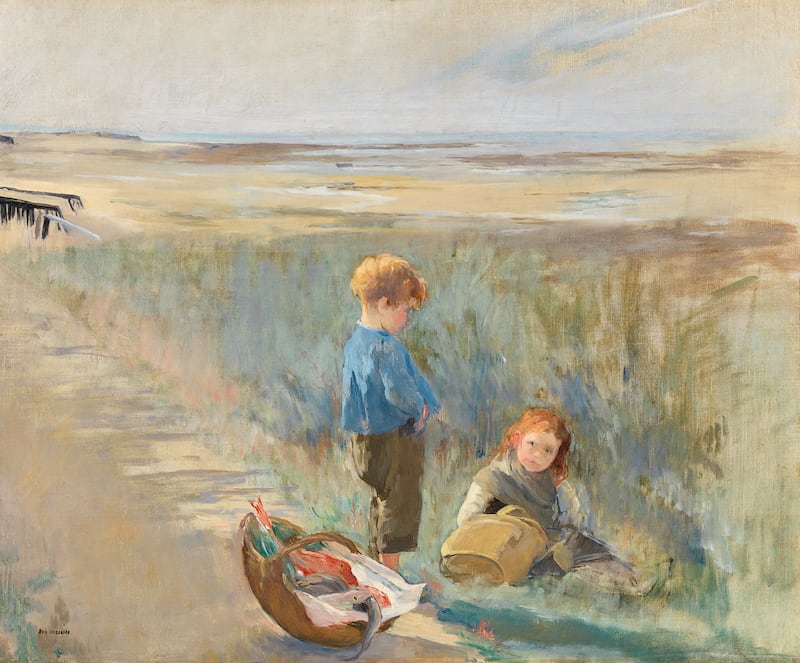
Eva Gonzàles never actually exhibited with the impressionists at all, but her friendships with the group and her artistic style puts her firmly in their camp. She died at just 34, and while the original Ordrupgaard exhibition gave a greater sense of the breadth and talent she was able to demonstrate in her short life, the works in the National Gallery do less justice to this often-overlooked figure. Across all four artists, however, the overriding sense is of the energy of a new way of looking at things, of capturing a new emerging order. Figures are painted from behind, domestic scenes are immediate and windows show fresh worlds. They are consciously modern, but all are subtly different: not simply because they are a different gender, but because they are different human beings with different lived experiences – as when you think of it, are we all.
Women Impressionists is at the National Gallery of Ireland until October 6th; €5/€11.25, under-18s free



















